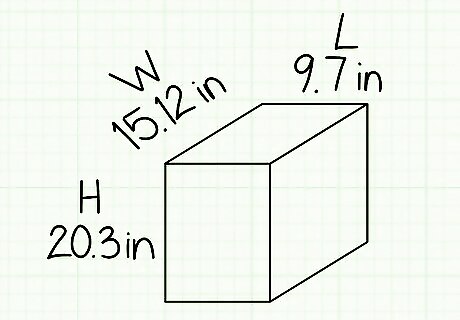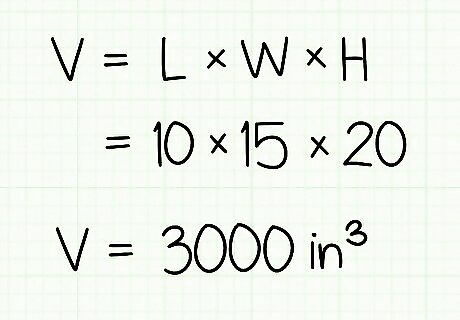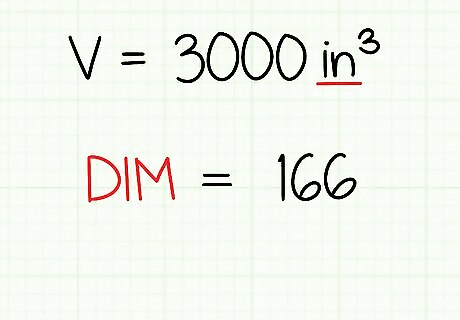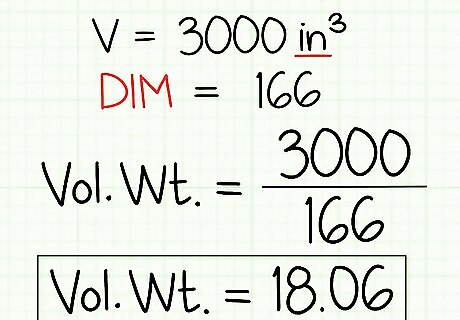
views
Calculating the Cubic Size

Measure the length, width, and height of the package. Use a tape measure to find the length, width, and height of the package using the standard units for your region, such as inches or centimeters.

Round your measurements to the nearest whole number. If the measurement is less than half an inch or centimeter, round down. If the measurement is more than half an inch or centimeter, round up. For instance, if the length measurement is 12.49, round down. If it’s 12.51, round up.

Multiply all 3 numbers together. To find the cubic size of the package, simply multiply the length by the width by the height. For instance, if the length is 10 inches, the width is 15 inches, and the height is 20 inches, multiply 10 x 15 x 20, which equals 3,000 inches. Alternatively, if the length is 40 centimeters, the width is 40 centimeters, and the height is 50 centimeters, multiply 40 x 40 x 50, which equals 80,000 centimeters.
Finding the Volumetric Weight

Determine the volumetric factor for your freight carrier. Different freight carries use different volumetric factors (also called “DIM factors”), so it’s important to find out which factor the shipping company you’re going to use employs. It’s essential to note whether the carrier uses centimeters and kilograms or inches and pounds to determine volumetric weight. Also, whether the shipment is domestic or international may also affect the volumetric factor. For instance, if the package is measured in inches, FedEx and UPS use a volumetric factor of 166 for domestic shipments and a volumetric factor of 139 for international shipments to determine the volumetric weight in pounds. However, other companies use a volumetric factor of 305 for packages measured in inches to calculate the volumetric weight in pounds. Most European and Asian shipping companies measure packages in centimeters and use a volumetric factor of 5,000 to determine the volumetric weight in kilograms. However, DHL measures international shipments in centimeters and uses a volumetric factor of 4,000 to calculate the volumetric weight in kilograms. Other companies use a volumetric factor of 6,000 for packages measured in centimeters to find the volumetric weight in kilograms.

Divide the cubic size by the volumetric factor. Once you know the volumetric factor based on the type of shipment, measurement units, and freight carrier, take the cubic size of the package and divide that number by the volumetric factor. For example, if you’re sending a domestic package in the U.S. with a cubic size of 3,000 inches through UPS, divide 3,000 by 166. The result is 18.07, which is the volumetric weight of the package in pounds. Alternatively, if you’re sending an international package with a cubic size of 80,000 through DHL, divide 80,000 by 4,000. The result is 20, which is the volumetric weight in kilograms.

Use an online calculator to double-check your calculations. Most major shipping companies, like DHL, UPS, FedEx, etc. provide online calculators for finding volumetric weight. If you’re using one of these carriers, visit their website and input the measurements of your package to ensure you used the right volumetric factor and calculated the volumetric weight correctly. For example, if you’re shipping a package through FedEx, use the online calculator available at https://www.fedex.com/en-us/shipping/packaging/what-is-dimensional-weight.html.



















Comments
0 comment